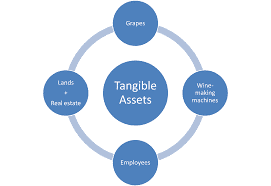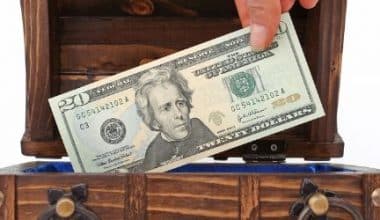Debits and credits are used to track the money that comes in and goes out of your business account. A debit is money that leaves an account, whereas a credit is money that comes in. However, most organizations employ a double-entry accounting system. This can be perplexing for inexperienced business owners, who may perceive the same cash as a credit in one place but a debit in another. On the other hand, debit and credit cards are both used to pay for products or services without using cash or writing a check. The distinction between the two is the source of the funds for the purchase. In this post, we will discuss the key differences between debit and credit in accounting, as well as between cards.
Credit Cards vs. Debit Cards: Overview
Credit and debit cards are essentially identical in appearance, with 16-digit card numbers, expiration dates, magnetic strips, and EMV chips. With one major distinction, both can make it simple and convenient to make purchases in stores or online. Debit cards allow you to spend money by drawing on funds in your bank account. Credit cards allow you to borrow money from the card issuer up to a specific limit in order to make purchases or withdraw cash.
You most likely have one credit card and one debit card in your wallet. They provide unrivaled convenience and security, but there are significant distinctions that could have a significant impact on your wallet. Here’s how to choose the best one for your spending needs.
What’s the Difference?
When you use a debit card, the amount of your purchase is deducted from your checking account practically immediately. When you use a credit card, the amount is charged to your credit line, which means you will pay the bill at a later date, giving you more time to pay.
It can be difficult to determine when each card should be used. Consider utilizing your debit card for everyday purchases because the money will be deducted from your checking account immediately. You may use your credit card for larger purchases, such as a rental vehicle or a hotel room, to save money by the time you have to pay.
The Benefits of Using a Debit Card
In addition to the convenience of not having cash on hand, debit cards have various advantages for users.
- Avoid adding to your debt: Using a debit card instead of a credit card reduces your chances of becoming in debt. This payment option should keep you within your budget and prevent you from spending the entire balance in your checking account. If you spend more than your checking account permits, your bank may charge you an
- Overdraft or Return Fee: Debit cards allow you to easily access your money. You can withdraw cash from ATMs with your debit card. Some retailers will even give you “cash back,” charging you more than your initial transaction to your bank account and handing you the cash with your receipt.
- Pay now to prevent a later bill: You don’t have to worry about a bill at the end of the month because the money from a debit card purchase is taken right out of your checking account. This also eliminates the possibility of interest accruing on the bill.
Using a debit card is an excellent way to keep track of your spending. However, be wary of Overdraft and Return Fees!
The Drawbacks of Using Debit Cards
The main disadvantages of using debit cards, as with credit cards, are credit score implications and expense.
- There are no incentives: You will not earn points, miles, or cash back on debit card purchases unless you have rewards checking account. Because rewards can save you money depending on how you redeem them, if you only use a debit card, you may be missing out.
- Will Not Help Build Credit: Building good credit entails demonstrating to lenders that you can repay money borrowed properly. Because you can’t do that when you use a debit card linked to your bank account, using a debit card alone won’t help you develop or build a credit history.
- Fees: Although there are no annual fees for debit cards, you may have to pay other costs to have a checking account. Monthly maintenance fees, overdraft fees if you overspend from your account, returned-item fees, and foreign ATM fees if you use your debit card at a machine owned by another bank or financial institution are examples of these.
The Benefits of a Credit Card
There are various advantages to owning and utilizing a credit card.
- Credit cards allow you to pay for purchases over time: You will receive a bill at the end of your monthly credit card cycle detailing how much you owe for purchases made in the previous 30 days. You have up to a few weeks to settle your credit card payment, depending on when you made the purchase. Technically, you are simply required to pay the minimum monthly price, but this may result in future debt. For example, if you spend $1,000 a month but only make your monthly minimum payment of $15, you are likely to slip into debt the next month. The credit card company will charge you a specific amount for interest each month that you do not pay off the entire debt. To improve your credit and avoid debt accumulation, pay off as much as you can each month.
Read Also: PAYROLL DEBIT CARDS: What It Is, Reviews and Laws Guiding Its Use
- Credit card use contributes to the development of your credit history: Every time you use your credit card to make a purchase and then pay it off on time, your credit history grows. Building good credit is essential when taking out a loan, purchasing a car or a house, and so on. Paying down your credit card account each month demonstrates your ability to manage debt and can help raise your credit score.
- It’s useful in an emergency: When there is an emergency, having a credit card is really useful and convenient. If you suddenly need to pay for a home repair, you can charge it to your credit card. Because you did not anticipate this expense, your credit card company will extend your credit until you pay the payment at the end of the month. Again, this allows you some breathing room to pay for something you weren’t expecting to pay for.
The Drawbacks of Using Credit Cards
The primary disadvantages of using credit cards include debt, credit score consequences, and expenses.
- Spending Can Result in Debt: When you use a credit card to make a transaction, you are spending the bank’s money, not your own. This money must be repaid, together with interest. You must at the very least make the minimum amount due each month. Having big balances on many cards might make it tough to keep up with monthly payments and put a strain on your budget.
- Effects of Credit Score: Paying your bills on time and keeping credit card balances low will improve your FICO scores. However, if you fall into the practice of paying late, maxing out one or more of your cards, closing older accounts, or applying for new credit too frequently, you may harm your credit history. Set up credit card alerts to keep you informed of payment due dates and card balances, allowing you to pay on time and avoid exceeding your credit limit.
- Fees and Interest: Because a credit card is really a short-term loan, you’ll have to pay interest on everything you spend. Your annual percentage rate is calculated using the interest rate and costs charged by the credit company (APR). The greater the APR on the card, the more it will cost you to carry a balance month after month.
You should know if your card has an annual fee, a foreign transaction cost, a balance transfer fee, a cash advance fee, a late payment fee, or a returned payment fee. As a general rule, the greater the annual fee, the better the credit card’s rewards program and the more perks it provides.
Are Debit Cards and Credit Cards the Same?
While they may appear identical and share characteristics such as 16-digit card numbers, expiration dates, and branded Visa or MasterCard logos, credit cards, and debit cards differ significantly. The main distinction is that debit cards are tied to a bank account and draw directly from it (similar to a check). A credit card, on the other hand, does not draw money instantly and must be paid back later, subject to any accrued interest costs.
Can You Get Rewarded for Using a Debit Card?
Usually, no. While debit cards do not earn points or miles for every purchase, the accounts from which they draw funds may reward users for a limited number of transactions. Standard debit cards also frequently include a round-up feature that allows users to transfer small sums of money to a savings account, a feature that credit cards do not provide.
Is it true that all credit cards charge interest?
While 0% interest promos are common, all credit cards eventually charge interest on balances that roll over from month to month. The annual percentage rate is used to calculate this interest rate (APR). Pay your bill in full every month to avoid paying interest in the long run.
Is it Possible for Anyone to Get a Credit Card?
Most people can apply for and acquire a credit card, but if they have a history of bad credit or no credit, the credit cards available to them may be less beneficial. Those with no or very bad credit may apply for a secured credit card, in which the credit line is secured by a deposit made when the card is opened. Higher credit ratings are required for more appealing rewards cards.
Is it safer to use a credit card than a debit card?
Credit cards typically provide more consumer protection against fraudulent purchases than debit cards. These fraud safeguards may not be as generous or easy to apply to debit card purchases.
Difference Between Debit and Credit in Accounting
Debits are funds that leave the account, increasing the balance of dividends, expenses, assets, and losses. Credits are funds that enter the account, increasing the balance of gains, income, revenues, liabilities, and shareholder equity.
Double-Entry Accounting
When it comes to your company’s finances, every transaction has two sides. This signifies that the rent account has a balance owing, and the business checking account pays the balance due. So the same money is flowing, but it is accounting for two different things. A chart of accounts is created by the double-entry system. Rent, vendors, utilities, payroll, and loans are examples of these.
Debits and Credits
Because these two are utilized concurrently, it is critical to understand where each goes in the ledger. Remember that most business accounting software keeps the chart of accounts running in the background while you look at the main ledger. Debits add to the total of dividends, expenses, assets, and losses. Debits should be recorded to the left of the main ledger column. Credits add to the total of gains, income, revenues, liabilities, and shareholder equity. The credits are listed to the right.
Debits and Credits In Action
Consider what the transaction is actually accomplishing when employing debits and credits. At first appearance, having a debit increase an asset’s balance and a credit lower it appears contradictory. However, assets are determined using the following equation:
Liabilities + equity = assets
As a result, assets must be calculated in conjunction with liabilities and equity. This means that whatever is added to the liabilities is recorded as a debit in the left column.
Here’s an illustration:
Consider the following example. You borrow $500 from a wholesaler to purchase supplies. The supply expense would be debited, and the accounts payable account would be credited. The business owner has a true understanding of his company’s financial health thanks to the double-entry system. He is aware that he has a certain quantity of actual cash on hand, as well as the exact amount of debt and payables that must be met.
What Are 4 Types of Credit?
The following are the 4 major types of credit;
- Revolving Credit
- Charge Cards
- Installment Credit
- Non-Installment or Service Credit
What Accounts Are Debit and Credit?
A debit raises asset or cost accounts while lowering liability, revenue, or equity accounts. A credit is always placed to the right of an entry. It raises liability, revenue, and equity accounts while decreasing asset and expenditure accounts.
What Is an Example of Debit?
A debit (DR) is an entry made on the account’s left side. It either raises or decreases an asset or cost account, or it decreases equity, liability, or income accounts. For example, you might debit a new computer purchase by entering it on the left side of your asset account.
Is Credit Positive or Negative?
Positive or debit accounts are assets and expenses, and they generally maintain a positive balance. Accounts with a negative balance are known as negative or credit accounts. They are classified as equity, income, and liabilities. We recommend that you memorize this.
Is a Debit a Negative?
The positive side of a balance sheet account is debit, and the negative side of a result item is credit. Debit on the left side of a double-entry system reflects the addition of an asset or expense on one hand. It reflects the reduction of liability or revenue on the other. Credit is the inverse of a debit.
Related Articles
- ACCOUNTING CYCLE: What is Accounting Cycle & All you Need
- Double Entry Bookkeeping: Simplified With UK Practices and Examples
- How do Money Orders Work? (+How to Buy with Debit Cards)
- LENDER CREDIT: Definition& How It Works
- Double-Entry Accounting Explained!!! Definition, How it Works, & Examples






